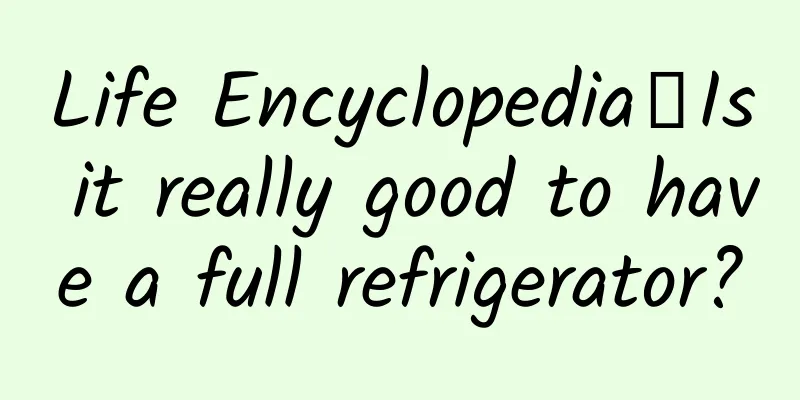Good news for wound healing: snails on French tables are not only delicious but also useful!

|
Produced by: Science Popularization China Author: Lin Lisha, Li Ya, Wang Xingzi (Kunming Institute of Botany, Chinese Academy of Sciences) Producer: China Science Expo Editor's note: In order to unveil the mystery of scientific work, the China Science Popularization Frontier Science Project launched a series of articles called "Me and My Research", inviting scientists to write articles themselves, share their scientific research experiences, and create a scientific world. Let us follow the explorers at the forefront of science and technology and embark on a journey full of passion, challenges, and surprises. There is a famous dish on the French table - French baked snails, which is known as the authentic soul of French cuisine and is known for its tender meat. However, the snails used in French cuisine are different from the ones we usually see. Most of them belong to the Helicidae family, including the hooded snail, the shiny snail, the chocolate-spotted snail, the loose snail, etc. Figure 1 French baked snails (A) and commonly used snail species (B) (Image source: Wikimedia Commons) Among them, the Helix lucorum is commonly known as the "French snail" in my country. Its origin is Asia Minor (today's Turkey), so the French call it the Turkish snail (Escargot Turc in French, Escargot is snail, Turc is Turkey). Unlike invasive species in the wild such as the African giant snail, the Helix lucorum is a farmed species in my country, with an annual output of up to thousands of tons, mainly used to make food, cosmetic raw materials and as pets (yes, you heard it right). Although the lifespan of snails in the wild is usually 2 to 3 years, they can live up to 10 years under suitable conditions without natural enemies. Not only delicious, but also easy to use! "French snails" can not only be made into delicious food, but also have many uses. Snail mucus mainly contains proteins and sugars, including allantoin, collagen, elastin, glycolic acid, antimicrobial peptides and glycosaminoglycans, which give snail mucus the ability to regenerate and repair. For example, well-known skin care brands around the world have launched a variety of natural skin care products made from snail mucus, which mainly have the functions of moisturizing, whitening and skin repair. In addition to being useful in the food and medical beauty industries, in the eyes of pharmaceutical chemists, snails also have another valuable chemical component: glycosaminoglycan polysaccharide molecules. Previous studies have found that snail mucus can be used as a bioadhesive to effectively promote the healing of acute and chronic wounds, and glycosaminoglycan is the main active ingredient of its mucus. Recently, our team (Wu Mingyi's team from the Kunming Institute of Botany, Chinese Academy of Sciences) found that the body and mucus of the shiny giant snail contain about 2% and 9% glycosaminoglycans, respectively. Through separation, purification and structural identification of the polysaccharide components, the results showed that this is a new type of sugar molecule with a unique side chain connected to the main chain of the molecule. This special structure makes it have strong wound healing activity . Figure 2 New glycosaminoglycan molecules from the bright giant snail and their wound healing effects (Image source: adapted from reference 1) What is this new sugar molecule? To explain what it means to have discovered a new and biologically active polysaccharide molecule from the shiny snail, we need to first introduce sugar molecules. Sugar often reminds people of desserts. In life, people are more exposed to glucose and sucrose, which serve as energy supplements and kitchen cooking condiments respectively. In the eyes of chemists, sugar molecules are very diverse and wonderful. According to the number of monosaccharide units in the sugar molecule, they can be divided into monosaccharides (such as glucose), disaccharides (i.e. sugars containing 2 monosaccharides, such as sucrose composed of glucose and fructose, maltose composed of 2 glucoses), trisaccharides... polysaccharides (or polysaccharides), molecules containing 2 to 10 monosaccharides are also called oligosaccharides, and so-called polysaccharides are biological macromolecules composed of many monosaccharides. Figure 3 Sugar in life (A) and sugar in the eyes of chemists (B) (Image source: A from Veer Gallery, B provided by the author) How diverse are sugar molecules? We know that DNA information is encoded by four deoxyribonucleotides, and theoretically there are 410 ways to combine a DNA chain containing 10 deoxyribonucleic acids. The building blocks of proteins are 20 amino acids, and there are 2010 ways to combine a protein containing 10 amino acids. What about sugars? Theoretically, the number of combinations of a polysaccharide containing 10 monosaccharides is too numerous to count. First, we need to count the types of monosaccharides. According to the number of carbon atoms in monosaccharides, they can be divided into pentoses (such as arabinose, ribose, and xylose) and hexoses (such as glucose, mannose, fructose, galactose, and fucose) (Note: trioses and tetroses do not form polysaccharides, and heptose is less common); each monosaccharide may have 1 to 3 sulfate substitutions at different positions; carbon 2 may have an amino or acetylamino substitution; the glycosidic bond between monosaccharides can be an α or β conformation; the position of each monosaccharide can be in the main chain or side chain... Among polysaccharides, glycosaminoglycans (usually containing hexuronic acid and hexosamine) are a large family. The glycosaminoglycan family has rich molecular structures and a variety of biological activities, so it is a class of molecules that medicinal chemists pay more attention to. For example, hyaluronic acid is often used in skin care products for moisturizing and filling effects, chondroitin sulfate can be used as eye drops and arthritis health care products, heparin and low molecular weight heparin are commonly used clinical anticoagulants, and Lentinan is used as an immunomodulator in clinical anti-cancer adjuvant drugs... (Note: Chemists name the above specific sugar molecules mainly based on chemical structure characteristics and the source of discovery, etc., and the names do not necessarily contain the word "sugar".) The chemical structure of glycosaminoglycans is very rich and diverse, and a few of them even have special side chains. For example, scientists previously discovered that a glycosaminoglycan from sea cucumbers has a fucose side chain, which is relatively rare in polysaccharides. This new study is the first time that scientists have discovered that glycosaminoglycans from land snails have a unique galactose side chain structure. What are the uses of glycosaminoglycans with special structures? The researchers applied the new glycosaminoglycans they discovered to acute and diabetic wound models in mice, and found that they can effectively promote inflammation improvement, granulation tissue proliferation, angiogenesis and collagen deposition, thereby accelerating wound healing. Comparing the glycosaminoglycans from the bright giant snail and the white jade snail, the two have similar main chain structures, the difference is that the former has galactose side chains while the latter does not. Comparing the wound healing activity, it was found that the former is better than the latter . Therefore, it is speculated that the unique side chain structure of glycosaminoglycans may have an enhancing effect on activity. Figure 4 Structural comparison of two snail polysaccharides (Image source: provided by the author) Diabetic foot ulcer is one of the most serious and common complications of diabetes, with the risk of amputation or even death. Traditional treatments include local cleaning, antibiotics, and surgery, but the effects are limited and prone to recurrence. In recent years, some emerging strategies such as stem cell therapy, photodynamic therapy, and new dressings have also emerged. However, these therapies have problems such as high treatment costs, multiple treatments, and possible skin irritation. Therefore, finding safe, effective, and economical new drugs remains an important research topic. Figure 5 Diabetic wound model and the wound healing effect of snail glycosaminoglycan (Image source: adapted from reference 1) Due to the excessive and persistent inflammatory response in diabetic wounds, the transition from the inflammatory stage to the proliferative stage is hindered, resulting in chronic wounds that are difficult to heal. Therefore, this natural glycosaminoglycan with inflammatory regulatory activity may have potential clinical application value. The discovery of polysaccharides from the bright giant snail not only enriches the structural types of glycosaminoglycans, but also once again proves the application potential of natural products in modern medicine. At present, the research results have been published online in Carbohydrate Polymers under the title of Structural analysis and accelerating wound healing function of a novel galactosylated glycosaminoglycan from the snail Helix lucorum. In addition, the invention patent protection of this natural glycosaminoglycan that promotes wound healing has been applied for. (Note: Latin parts in the text should be italicized) References: 1.Li Y, Wang X, Chen J, et al. Structural analysis and accelerating wound healing function of a novel galactosylated glycosaminoglycan from the snail Helix lucorum. Carbohydr Polym. 2024, 348:122900. 2.Blessing Kolawole. Escargot Snails – What Does Escargot Mean in French. 3.Matoori S, Veves A, Mooney DJ. Advanced bandages for diabetic wound healing. Sci Transl Med. 2021, 13(585):eabe4839. 4.Singh N, Brown AN, Gold MH. Snail extract for skin: A review of uses, projections, and limitations. J Cosmet Dermatol. 2024, 23(4):1113-1121 |
<<: Space junk is increasing day by day. How should we deal with it? (Part 2)
Recommend
Another wave of confusing place names: "Changchun" is not spring-like all year round, and "Mudanjiang" has no peonies
This article is about 3000 words Reading time: 8 ...
Brisk walking is now popular, so take this brisk walking guide!
《Cotton Swab Medical Science Popularization》 Depa...
ASUS B150M-A review of Baidu smart security motherboard
The full launch of Intel's 100 series motherb...
Uh, I can't change my profile picture! WeChat system maintenance, some functions will be affected
After finishing the coding, I flipped through my ...
Is it true that you can earn 2 million yuan a year by recycling old clothes? What is the use of recycling old clothes?
Do you know where the clothes you throw into the ...
The cause of hair loss has finally been found! Check here to see if it’s you (including tips on how to prevent hair loss)
What storms and waves have you never seen? But I&...
Will Apple launch MFi certification for the iPhone's Type-C port? Maybe it's not a bad thing
At present, except for some models with extremely...
On this day of that year, Taiwei was unveiled along with the first flight of Fengyun...
On September 7, 1988, China's first meteorolo...
"Underwater locusts" invade on a large scale! Netizens: Can we solve the problem by eating them?
Starfish are known as "sea locusts". Th...
How to acquire customers online? 5 key core touch points!
If I don’t tell you, 80% of people would probably...
Can't use WeChat Pay? Meituan responded: The payment system was abnormal and has been fully restored
[[401312]] On May 24, "Meituan cannot use We...
With so many mobile payment systems, the NFC ecosystem may be fragmented in the future
Editor's note: We live in a great era: when w...
Learn from Wang Sicong’s marketing skills behind the scenes of the “Chongding Conference”
These days, if students who are engaged in market...
Godot runs on Android
The latest Godot 3.5 Beta 3 development version i...
The "assembly call" for migratory birds has been sounded again! How do they fly across mountains and seas?
Science Times reporter Ji Chunhong The seasonal c...









